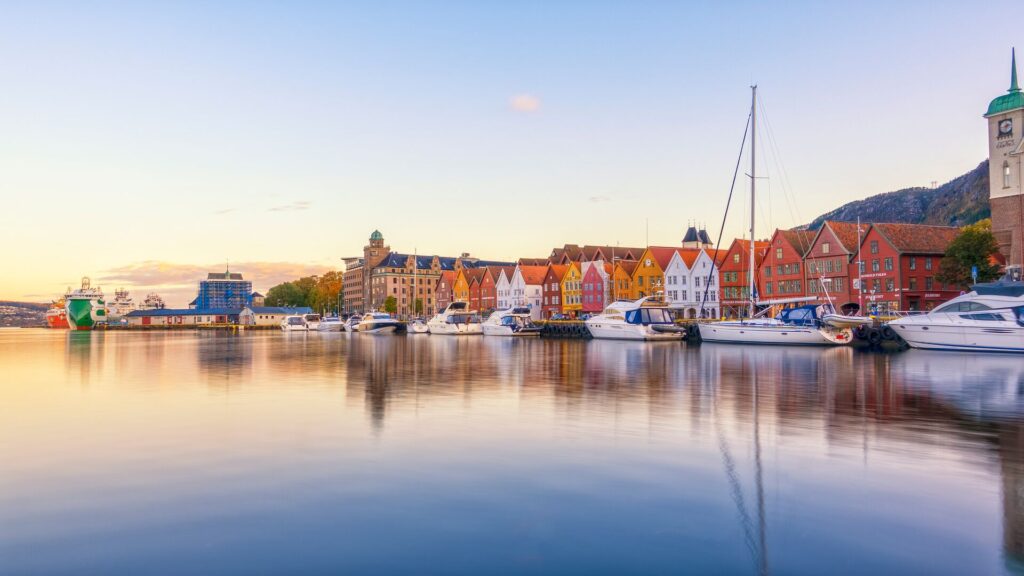Climate change is the biggest crisis of our time and in response, it seems everything is going green from our homes and workplaces to cars and energy sources. But what about our planes? The fuel-guzzling aviation industry accounts for over 3.5% of global CO2 emissions, with almost 40 million passenger flights taking off in 2019. After the onset of the COVID-19 pandemic, that figure dropped to 16.9 million global flights, and experts say it will take until 2024 to get flight numbers back to 2019 levels. But when travellers inevitably return to the skies in their billions, will it be business as usual? Or will the aviation industry switch its focus to sustainable air travel? Insight investigates how close we really are to sustainable flights.
NET-ZERO CARBON EMISSIONS
The 2021 International Air Transport Association (IATA) Annual General Meeting saw the world’s largest airlines commit to net-zero carbon emissions by 2050, in line with the Paris Agreement goals to limit global warming to 1.5°C. That’s a lofty goal, so Insight has dug a little deeper into the current realities of sustainable air travel to find out what’s being done to get there.
Read more: How to remove (some of) the stress of air travel this summer
CARBON OFFSETTING
Carbon offsetting is old news, however, the way airlines do it is changing. From 2027, airlines will need to pay to offset any CO2 emissions exceeding 2020 levels, under the Carbon Offsetting and Reduction Scheme for International Aviation (CORSIA). Airlines like British Airways, JetBlue, EasyJet and Air France already started offsetting domestic flights in 2020, however, carbon offsetting can be seen as a smokescreen. The issue is that any carbon emissions are harmful and you can’t change that with carbon offsetting. The real solution is to reduce carbon emissions and stop them altogether.
In September 2022, EasyJet announced it would stop offsetting carbon emissions by its planes and have committed to net zero emissions by 2050. Their strategy includes introducing hydrogen-powered jet engines and sustainable aviation fuel.
Read more: The land of fire, ice and renewable energy – so how does Iceland do it?
SUSTAINABLE AVIATION FUEL
If the most effective solution is to reduce carbon emissions in the first place, what are the greener options for airlines? Sustainable aviation fuel (SAF) is one of the most promising methods of reducing emissions at this time.
SAF is made from materials that have already absorbed greenhouse gases from the atmosphere, like crops, wood chips, vegetable oils and household waste. When planes use it, the flight still produces emissions like conventional jet fuel, but emissions are reduced by around 80%.
That sounds like good news, however, SAF is currently only available in small amounts, few airports offer regular supplies, and it’s more expensive than standard jet fuel. Governments need to introduce rewards for reducing emissions, which will incentivise increased production of SAF, meaning the price will drop.
WHICH AIRLINES ARE GETTING INTO SAF?
In February 2021, KLM flew the first Boeing 737 passenger plane from Amsterdam to Madrid, fueled with synthetic kerosene mixed with standard jet fuel.
The following year in July 2022, American Airlines announced a deal with biofuel company Gevo, Inc. to purchase 500 million gallons of SAF over five years, as part of the airline’s goal to achieve net-zero emissions by 2050. American Airlines is the only US airline to use more than one million gallons of SAF in 2021.
In the same month, Alaska Airlines signed a deal with Twelve and Microsoft to create sustainable fuels using carbon captured from water, air and renewable energy. Alaska Airlines has been using SAF blends since 2011 on some routes.
Airbus is testing hydrogen combustion technology with its A380s as part of its goal to achieve zero emissions.
In September 2022, Delta Airlines signed the largest US deal on record for green hydrogen-produced fuels with DG Fuels. The company put the challenge of sustainable flights into perspective by saying that the current global SAF supply could only operate Delta’s fleet for one day.
But it’s getting a helping hand. In September, the Inflation Reduction Act (IRA) in the US boosted tax credits for SAF that should help lower the cost of SAF. It’s hoped this will encourage a shift towards SAF and start weaning the industry off traditional jet fuel.
But what if we didn’t need fuel at all?
Read more: The sustainable benefits of traveling in the off-season
ELECTRIC PLANES
Electric planes are another potential option for sustainable flights. There’s a lot of benefits, with electric aircraft being greener, cheaper, and quieter. However, there is also a flaw. Experts don’t foresee long-haul electric flights any time soon, simply because the batteries are too heavy and you need too many of them to run the plane.
Until this problem is solved, long-haul electric flights are likely decades away. All is not lost though, with hybrid planes using both fuel and electric motors being the next best option. Electric aircraft are also still an option for shorter flights, and there’s a few exciting developments there.
In October 2022, the first fully electric passenger plane took off. Built by Eviation Aircraft and dubbed “Alice”, the plane flew at an altitude of 3,500 feet for eight minutes, after taking off from Grant County International Airport in Washington. “Alice” can last from one to two hours per charge and Eviation said it’s gunning for a distance of 250 nautical miles per battery charge. They’ve also announced a deal with Global X Airlines for 50 all-electric commuter Alice aircraft. The deal will see carbon-free routes for passenger travel open up in Florida, the Bahamas, and the Caribbean.
EasyJet aims to run electric aircraft on routes under 500km by 20230. Meanwhile, Norway wants to make all short-haul flights electric by 2040.
Read more: 11 fascinating biodiverse locations you can visit with Insight
LOW-WASTE FLIGHTS
Sustainable flights aren’t just about the fuel. The waste generated by passenger flights is enormous. According to the IATA, passenger flights produced over 7.3 million tons of cabin waste in 2018 alone, while a typical passenger generates 1.43 kilos of cabin waste each flight. With all those single-use plastic items from cutlery to disposable toothbrushes, drinking cups and plastic-wrapped blankets and headphones, we can see how it adds up.
Many airlines are working to change this. In 2018, HiFly operated the world’s first single-use plastic-free flight and now all of its flights are free from single-use plastic. Other airlines like Qantas, Air New Zealand and Etihad have pledged to reduce their waste on flights, while Ryanair has committed to going plastic-free by 2023.
So are sustainable flights almost within our reach? We’re not quite there yet, but with remarkable new technologies like sustainable aviation fuels, green hydrogen power, and electric aircraft, we’re getting a lot closer. As environmental innovation continues to reach for the skies, we look forward to seeing sustainable flights become reality in the near future.



